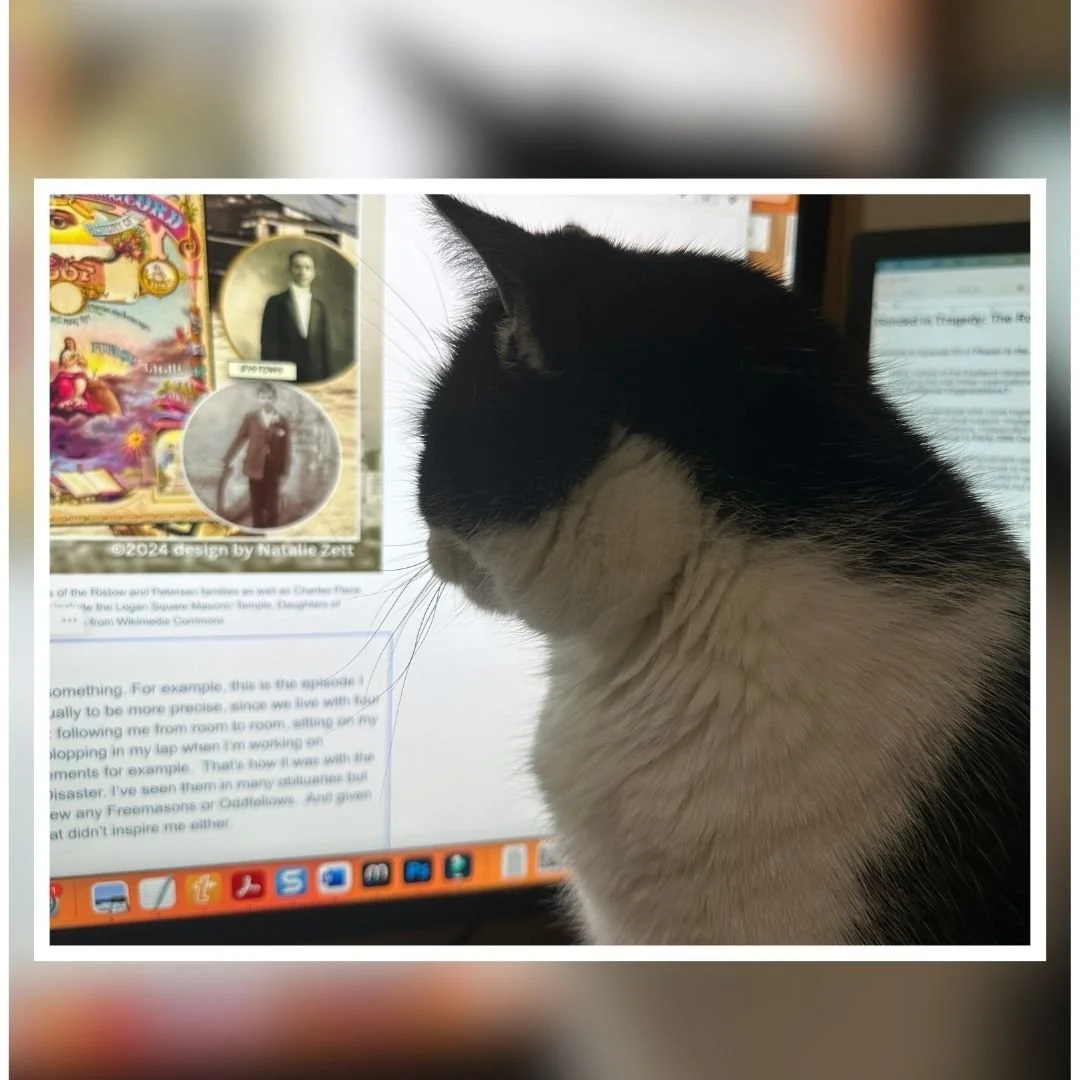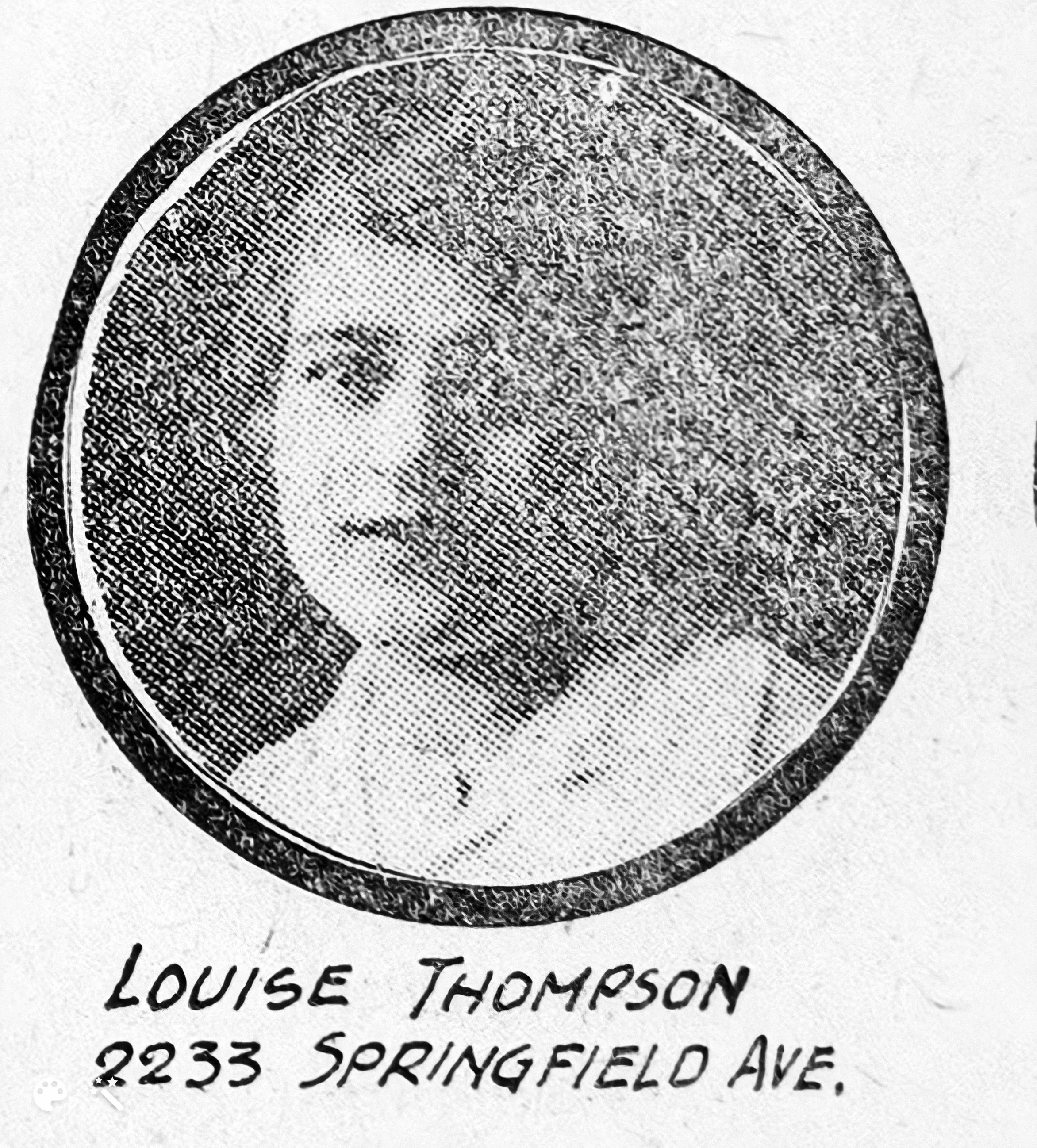Bonded in Tragedy: The Role of Fraternal Orders in the Eastland Disaster
Composite image created by Natalie Zett. The Eastland Victims are members of the Ristow and Petersen families as well as Charles Piece. The other images of Fraternal organizations from the turn of the 20th century include the Logan Square Masonic Temple, Daughters of Rebekah, Freemasons and William McKinley, and an Oddfellows poster. All images from Wikimedia Commons
Resistance
You know how they say, "what you resist, persists"? Well, let me tell you, they were onto something. In my case, the topic of Fraternal organizations kept dogging me, or rather, since I live with four cats, I should say it was "feline-ing" me.
It followed me from room to room, sat on my desk, batted at the screen, got underfoot, and plopped in my lap when I was trying to concentrate on things like writing SQL query statements. That's how it was with the topic of Fraternal Organizations and the Eastland Disaster.
An example of early morning “FELINE-ING”
Freemasons, Oddfellows, Elks? Oh my!
I've seen mentions of these organizations in many Eastland Disaster victims’ obituaries, but I skimmed over them. I mean, I didn't think I knew any Freemasons or Oddfellows personally. Plus, with all the controversies around secret societies these days, I wasn't exactly jumping at the chance to plunge into the topic. But I just couldn't shake the feeling that I needed to take a closer look at this, especially in the context of Chicago in 1915.
Get this: the very first "Eastland" folks I profiled outside of my own family were both Masons and Oddfellows. That's when I finally threw in the towel and decided to step way out of my comfort zone to explore the role of Fraternal Organizations in the lives of those affected by the Eastland Disaster.
As I started digging into this, I realized that understanding the significance of these organizations in the early 1900s was key to getting a better picture of the lives and communities impacted by this tragic event. By resisting the topic, I was missing out on a crucial piece of the puzzle. Now, I'm excited to share what I've learned and shed some light on this fascinating aspect of the Eastland Disaster story.
The Concordia Pleasure Club
You know what? Even though I felt like I had to qualify everything I said, exploring this topic was so engaging, and I can't wait to dive deeper. This episode was a bit of a departure from my usual format, where I go into detail about Eastland Disaster families. As a genealogist, that approach comes naturally to me, but it's good to switch things up now and then. Even in the midst of this tragic history, there are some lighthearted moments—like discovering the existence of the "Concordia Pleasure Club." I shared this in the podcast, but it's so goofy that it's worth mentioning again.
Growing up, we were heavily influenced by our mother's Missouri Synod Lutheran background. Not that she was super religious or anything, but it was part of the German culture that her dad brought with him when he immigrated from what used to be Prussia. So, we went to Concordia Lutheran Church, and later I attended Concordia College in Ann Arbor. And let's not forget the ever-present Concordia Publishing House. Just a couple of weeks ago, I was chatting with folks at the Concordia Historical Institute in St. Louis to get my hands on a copy of an article. I may have left Mo Synod, but there are some things that just stick with you, you know?
For me, Concordia is associated with church services, Sunday School, Walther League, choir practice—stuff like that. But Concordia and Pleasure? Not exactly a combo I'd expect. But thanks to a revelation in the obituary of one of the Eastland Victims, I found out he was a member of a "German Secret Order." Of course, my curiosity was piqued, and I couldn't help but do a little more digging. Turns out, just five years before the Eastland Disaster, this man and two of his friends founded a non-profit called the "Concordia Pleasure Club."
John Swedin’s obit from 31 July 1915 Chicago Tribune and the Not-for-Profit announcement of the creation of the Concordia Pleasure club Nov. 26, 1910, Chicago Tribune.
When you expect to stumble on a truly secret society such as the German Secret Order but instead uncover the Concordia Pleasure Club, you have to chalk it up to "history is weirder than you think." It's like opening a dusty old tome, expecting to find ancient incantations, and instead discovering grandma's secret apple pie recipe. Life's full of surprises, and sometimes, the most intriguing mysteries lead to the most unexpected and delightful discoveries.
Louise Thompson was also featured in this episode.
Show Notes from Ep 56
Welcome to Episode 56 of Flower in the River Podcast—Bonded in Tragedy: The Role of Fraternal Orders in the Eastland Disaster— where we will explore the role of Fraternal Organizations in the wake of the Eastland Disaster.
Many victims of the Eastland disaster were members of various fraternal organizations
Exploring the role these organizations played in the lives of working-class communities in early 20th century Chicago
What are Fraternal Organizations?
Groups of individuals who come together based on shared interests, beliefs, or backgrounds
Aim to provide mutual support, engage in charitable activities, and foster a sense of community
Examples: Freemasons, Independent Order of Odd Fellows (IOOF), Knights of Columbus, Elks Club, Rotary International
Fraternal Organizations in Early 20th Century Chicago:
Provided power and advancement opportunities in the workplace
Allowed working-class individuals to build cross-class networks
Defined a collective identity rooted in gender and race while sidelining class distinctions
Fostered community and solidarity but also represented a division in American class politics
Conclusion:
The intersections of faith, fraternity, and community in early 20th century Chicago were nuanced
Researching ancestors' involvement in fraternal organizations can provide insight into how these groups influenced their livez
Podcast Link: Bonded in Tragedy: The Role of Fraternal Orders in the Eastland Disaster
YouTube Link: Bonded in Tragedy: The Role of Fraternal Orders in the Eastland Disaster




